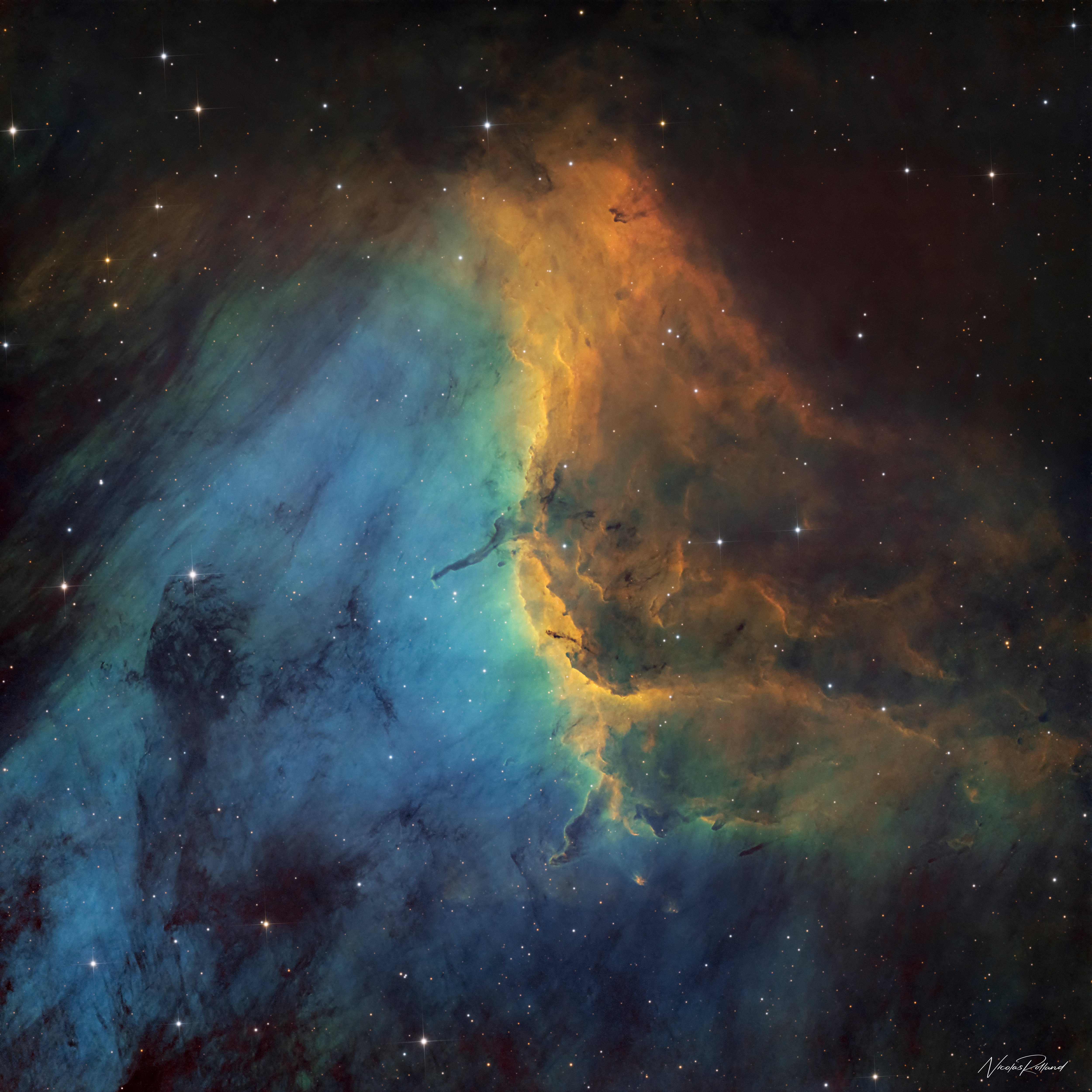Pelican Nebula
IC 5070
The Pelican Nebula (IC 5070) is a large emission nebula in the constellation Cygnus. This HII region is associated with the North American Nebula (NGC 7000). Located near the blue-white supergiant star Deneb, these two nebulae would belong to the same gas and dust complex. The star Deneb, one of the largest knowns in the Milky Way, would illuminate by its intense radiation the gas clouds of this region.
IC 5070 is much-studied because of an active mix of star formation and evolving gas clouds. The light from energetic young stars is causing an ionization front to gradually advance outward. Dense filaments of cold gas still remain. In millions of years from now, as the movement of gas and stars, this nebula will no longer resemble a Pelican.
This picture respects the Hubble Palette version (SHO): H-Alpha mapped to green, SII mapped to red and OIII mapped to the blue channel. While the colors in this image are not the true colors, the narrowband filters were used to create the nebula color.
To capture this image, a Planewave CDK17 telescope (432mm) was used, paired with a FLI Kepler 4040 CMOS camera and Astronomik Deep-Sky SHO filters. A total of 540 frames, amounting to 9 hours of exposure, were stacked. Post-processing techniques were applied to adjust contrast and levels, bringing out subtle details in the nebula.
I have already processed a wider filed of view of this area here.
TECHNICAL DATA
ACQUISITION DETAILS
OPTICS Planewave CDK17 @ F/6.8 Dall Kirkham
CAMERA FLI Kepler 4040fi CMOS
MOUNT Planewave L-500
FILTERS S, H, O
LOCATION Apollo 11 Observatory, Fregenal de la Sierra, Badajoz Extremadura, Spain
DATE August 2024
EXPOSURES 9 hours (Ha 120x 60 sec, OIII 180 x 60 sec, SII 240 x 60 sec)
PROCESSING SOFTWARE Pixinsight, Photoshop
COPYRIGHTS Nicolas Rolland & Roboscope

TARGET DETAILS
RA 20h 50m 55.5s
DEC +44° 26' 38.3"
SIZE 40.8 x 40.8 arcmin
PIXEL SCALE 0.314 arcsec/pixel
ORIENTATION Up is 2.4 degrees E of N
CONSTELLATION Cygnus
MAGNITUDE 8.0
DISTANCE 1,800 ly
